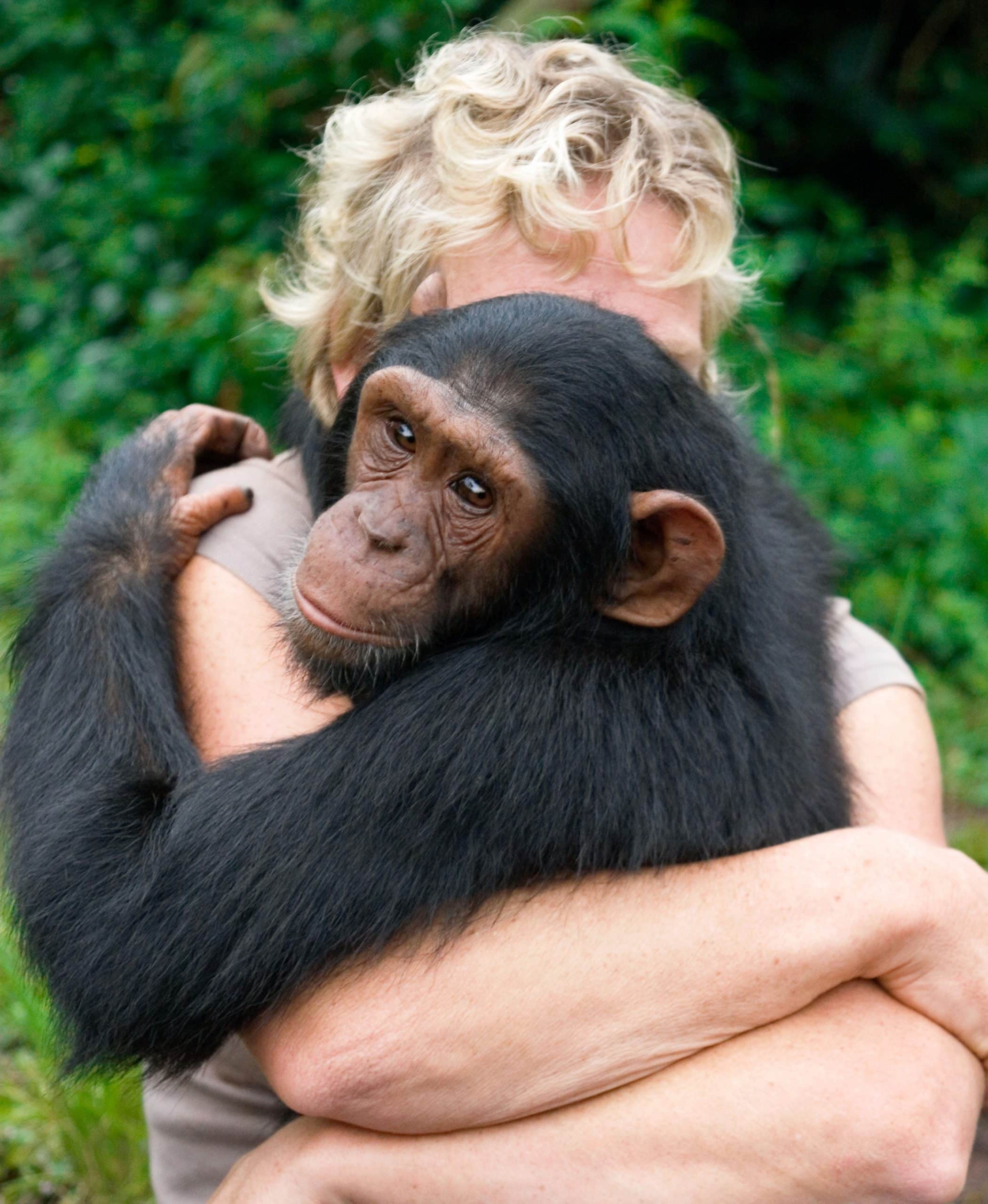
01 Sep The Evolution of Human hair & Why Humans Lack Fur
What is the latest theory of why humans lost their body hair? Why are we the only hairless primate?
Mark Pagel, head of the evolutionary biology group at the University of Reading in England and editor of The Encyclopedia of Evolution, fills us in:
We humans are conspicuous among the 5,000 or so mammal species in that we are effectively naked. Just consider what your pet dog or cat (or, for that matter, a polar bear) would look like, and how it might feel, if its furry coat were shorn.
Why Humans Lack Fur
Kukeri are elaborately costumed Bulgarian men, and sometimes women, who perform traditional rituals intended to scare away evil spirits.
Scientists have suggested three main explanations for why humans lack fur. All revolve around the idea that it may have been advantageous for our evolving lineage to have become less and less hairy during the six million years since we shared a common ancestor with our closest living relative, the chimpanzee.
The aquatic-ape hypothesis suggests that six million to eight million years ago apelike ancestors of modern humans had a semiaquatic lifestyle based on foraging for food in shallow waters. Fur is not an effective insulator in water, and so the theory asserts that we evolved to lose our fur, replacing it, as other aquatic mammals have, with relatively high levels of body fat. Imaginative as this explanation is—and helpful in providing us with an excuse for being overweight—paleontological evidence for an aquatic phase of human existence has proven elusive.
The second theory is that we lost our fur in order to control our body temperature when we adapted to life on the hot savannah. Our ape ancestors spent most of their time in cool forests, but a furry, upright hominid walking around in the sun would have overheated. The body-cooling idea seems sensible, but even though lacking fur might have made it easier for us to lose heat during the day, we also would have lost more heat at night, when we needed to retain it.

Designer Elle Barbeito is an artist and designer in Miami, FL USA. Hair: @wolffsachs
Recently it has been suggested that ancestors to modern humans became naked as a means to reduce the prevalence of external parasites that routinely infest fur. A furry coat provides an attractive and safe haven for insects such as ticks, lice, biting flies and other “ectoparasites.” These creatures not only bring irritation and annoyance but carry viral, bacterial and protozoan-based diseases such as malaria, sleeping sickness, West Nile and Lyme disease, all of which can cause chronic medical problems and, in some cases, death. Humans, by virtue of being able to build fires, construct shelters and produce clothes, would have been able to lose their fur and thereby reduce the numbers of parasites they were carrying without suffering from the cold at night or in colder climates.
Human lice infections, which are confined to the hairy areas of our bodies, seem to support the parasite hypothesis. Naked mole rats, animals that can be described as resembling “overcooked sausages with buck teeth,” also seem to support the theory: They live underground in large colonies, in which parasites would be readily transmitted. But the combined warmth of their bodies and the confined underground space probably negate the problem of losing heat to cold air for these animals, allowing them also to become naked.
Once hairlessness had evolved this way, it may have become subject to sexual selection—being a feature in one sex that appealed to another. Smooth, clear skin may have become a signal of health, like a peacock’s tail, and could explain why women are naturally less hairy than men and why they put more effort into removing body hair. Despite exposing us to head lice, humans probably retained head hair for protection from the sun and to provide warmth when the air is cold. Pubic hair may have been retained for its role in enhancing pheromones or the airborne odors of sexual attraction.
In a recent article, Neufeld and Conroy claim that human head hair is not fur and ask for further information about the evolution of human hair.
Explanations of body hair reduction in humans are numerous, as Neufeld and Conroy note. Research by Alan Rogers indicating that one of the genes affecting skin color is involved in hair reduction seems to support the thermoregulation theory. Hair holds in moisture, producing an insulating affect that also reduces the loss of moisture. Every so often one finds in the press the idea that humans are unique. Certainly there are unique aspects of human physiology and behavior, but it is also true that by reference to the great diversity of the biological world we find man firmly set within transitions of form and action. In the wider view man is no more unique than most other animals.
Claims that hair reduction occurred in response to parasites belies the fact that humans are still plagued with them, and does not explain the density of head hair in most people. “Most” is the important word here: Not all people have the kind of hair nor the rate of growth asserted by Neufeld and Conroy. Thierry’s and Jolly’s championing of head hair as a communicative device is of interest and reflects some of Darwin’s musings, though others have produced comprehensive analyses of the subject. Neufeld and Conroy believe that the human head characteristically has long hair that grows continuously throughout life. Thick head hair seem to argue against it being a thermoregulating device. This would be especially true for dark hair, but then we know that hair on the head is infused with moisture from the scalp during activity or in hot temperatures, and forms an insulation layer reducing the effects of heat gain.
The rest of the body gives off heat by evaporation, also reducing heat build-up. The clearest problem with Neufeld and Conroy’s theory is that most of humanity does not have one uniform hair type. Second, many hair types do not grow in straight, continuous fibers like the terminal hair of Europeans and many Asians.
There are generally four types of hair: lanugo (also common on other animals. For example, seals and elephants are often born with a covering of lanugo. Some authors have claimed that fetal whales also have lanugo) However, there is no supporting evidence for such claims) or infant hair, primary terminal (children’s hair), secondary terminal (adult hair), and vellus hair. Hair fiber length and shape is governed by many factors, including diet, which affects both the sebaceous glands and the nature of hair production, as well as the hormones, which also vary with sex, population, and activity.
Most humans with straight hair experience head hair growth of about 16 cm to a maximum of 3 feet per year. However, hormonal changes that occur in the mid- to late twenties slow the growth of head hair, so that it begins to grow shorter and finer. Neufeld and Conroy refer to recent experiments showing that terminal hairs transplanted to the legs grow at a slower rate than does hair on the head. This confirms knowledge that terminal hairs are found naturally on the legs and that proliferative tissue behaves differently depending on its location and the influence of local hormonal and other effects. This was reported by Garn in 1948. It has been known for more than 50 years from skin grafts that they produce hair shafts characteristic of the donor site. There are examples of continuously growing hair reaching unusual lengths, which is the result of peculiar conditions of diet and life style (sedentism) and hormonal abnormality, as in the examples shown in the illustration. If we were to focus our attention only on humans, however, we would be doing a disservice to the study of hair.
Like any proliferating tissue, hair has a relationship to development, diet and maturation. Hair pigmentation differs between individuals and groups. A study by Myers and Hamilton found a significant difference in hair growth in males and females, with hair growth faster in males. Seasonal growth rates have been quantified.
However, continuously growing hair is found in some other animals, namely a few that have been selected by humans for this trait. Thus, hair growth is partly a product of domestication. Continuous growth of hair occurs in domesticated varieties of sheep, with growth varying among members of the same genus. This is especially true of the Merino sheep, which has developed persistently growing hair follicles. The manes and tails of horses also seem to grow continuously.
This is to be expected since we know that hair growth varies significantly among different human populations, as well as within human groups. The factors, developmental and genetic, that affect the ontology of hair growth are not clearly understood.
Book with me.
Please text +1917.791.7662 for availability and the date of your desired hairdressing service. We will get back to you and thanks! My hair salon is located at 1874 West Ave, Miami Beach, FL 33139 .
I do house calls for haircuts and hair services at your home or office or hotel calls in Miami, Brickell, Coconut Grove Coral Gables, Pinecrest, Downtown Miami, Edgewater, Wynwood, Fisher Island, Key Biscayne, Miami Beach, Mid-Beach, South Beach, Star Island, Bal Harbour. Sunny Isles and North Miami.


